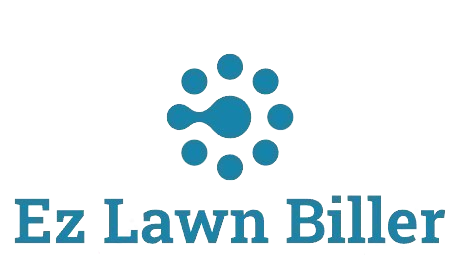Discover the essential tools that make performance analysis easier and more effective for your business. Learn how to leverage them for success.
Top Tools to Help You Analyze Performance
In today’s fast-paced business environment, understanding performance metrics is crucial for success. Analyzing performance allows companies to identify strengths, weaknesses, and opportunities for growth. This blog post will explore the top tools available to help businesses analyze performance effectively. From data analytics to customer feedback systems, we’ll cover a range of tools that can enhance your decision-making processes and improve overall performance.
Performance analysis is vital across various sectors, whether you’re running a lawn care business or a tech startup. The ability to track and interpret performance metrics can significantly influence strategic planning and operational efficiency. This article will delve into the top performance analysis tools, their benefits, and how they can be utilized effectively.
1. Understanding Performance Metrics
Before diving into the tools, it’s essential to understand what performance metrics are. Performance metrics are quantifiable measures used to gauge the efficiency, effectiveness, and success of an organization in achieving its objectives. Metrics can include financial data, customer satisfaction scores, employee performance, and more.
By utilizing performance metrics, businesses can gain insights into areas that require improvement and recognize patterns that indicate success. For example, a lawn care business might track customer retention rates and job completion times to assess operational efficiency. This data can then inform decisions on resource allocation, staff training, and service offerings.
2. Google Analytics: The Must-Have Tool for Online Performance
Google Analytics is an indispensable tool for businesses with an online presence. It provides a comprehensive suite of features that allow users to track website traffic, user behavior, and conversion rates. With Google Analytics, you can analyze how visitors interact with your site, which pages are performing well, and where users are dropping off.
One of the key advantages of Google Analytics is its ability to segment data. Businesses can filter results by demographics, location, and device type, allowing for a more nuanced understanding of their audience. For instance, a lawn care service may discover that most of its traffic comes from mobile users searching for local services. This insight can drive targeted marketing campaigns and website optimizations.
3. HubSpot: Comprehensive Performance Tracking
HubSpot is a powerful all-in-one marketing, sales, and customer service platform that excels in performance analysis. The software provides tools for tracking customer interactions, sales pipelines, and marketing campaigns. HubSpot’s reporting features allow businesses to visualize performance metrics through dashboards, making it easier to identify trends.
For example, a lawn care company can use HubSpot to track lead sources and analyze which marketing efforts yield the highest return on investment. By measuring the effectiveness of various channels, businesses can allocate their budget more efficiently and focus on strategies that drive the most leads.
4. Tableau: Transforming Data into Insights
Tableau is a leading data visualization tool that helps organizations turn raw data into comprehensible visual stories. It enables users to create interactive dashboards that display performance metrics in a visually appealing format. This is especially useful for businesses with large datasets, as Tableau can connect to multiple data sources and present information in an easily digestible manner.
A lawn care business might use Tableau to visualize seasonal trends in service requests. By analyzing data over time, they can anticipate peak seasons and adjust staffing or inventory accordingly. This proactive approach can enhance customer satisfaction and operational efficiency.
5. Customer Feedback Tools: Gauging Satisfaction
Customer feedback is a critical component of performance analysis. Tools like SurveyMonkey and Typeform allow businesses to gather valuable insights directly from their customers. Understanding customer satisfaction and preferences is crucial for continuous improvement and service enhancement.
For instance, a lawn care company can send out surveys after service completion to gauge customer satisfaction. Questions could focus on the quality of service, timeliness, and overall experience. Analyzing this feedback can help businesses identify areas for improvement and ensure they are meeting customer expectations.
6. Project Management Tools: Monitoring Team Performance
Project management tools like Asana and Trello not only help organize tasks and workflows but also provide insights into team performance. These tools allow managers to track project progress, deadlines, and team member contributions, giving a clear overview of operational efficiency.
In a lawn care business, project management tools can help schedule jobs, track employee performance, and analyze completion rates. By monitoring these metrics, business owners can identify high-performing team members and ensure that workload is distributed evenly across the team.
7. Financial Analysis Tools: Keeping an Eye on Profitability
Financial performance is a key metric for any business. Tools like QuickBooks and FreshBooks provide comprehensive financial analysis features, allowing businesses to track revenue, expenses, and cash flow. These insights are crucial for understanding overall financial health and making informed business decisions.
A lawn care company can use financial analysis tools to monitor invoicing and payment status, helping to reduce overdue payments. By generating financial reports, businesses can identify trends in income and expenses, allowing for better budget planning and profitability analysis. This is where tools like [Lawn Biller Software](https://ezlawnbiller.com/) also come into play, offering specialized solutions for the lawn care industry.
8. Social Media Analytics: Measuring Engagement
Social media platforms like Facebook, Instagram, and Twitter offer built-in analytics tools that provide insights into engagement and reach. Understanding how content performs on social media is essential for refining marketing strategies.
For a lawn care business, social media can be a powerful marketing tool. By analyzing which posts generate the most engagement, owners can tailor their content to resonate more with their audience. Whether it’s showcasing successful projects or offering tips on lawn maintenance, social media analytics can guide content creation and enhance brand visibility.
Conclusion
Analyzing performance is essential for any business looking to thrive in a competitive landscape. By leveraging the right tools, organizations can gain valuable insights into their operations, customer satisfaction, and financial health. From Google Analytics for website performance to project management tools for team efficiency, each tool offers unique benefits that can drive improvement.
As we’ve discussed, tools like HubSpot and Tableau can enhance your understanding of customer engagement and operational metrics, while customer feedback tools provide direct insights into client satisfaction. For lawn care businesses, specialized software like [Lawn Biller Software](https://ezlawnbiller.com/) can streamline billing and client management, significantly improving overall performance.
In conclusion, the integration of these performance analysis tools into your business strategy will not only optimize operational efficiency but also foster growth and customer satisfaction. Take action now to evaluate the tools best suited for your needs and watch your performance metrics soar!




